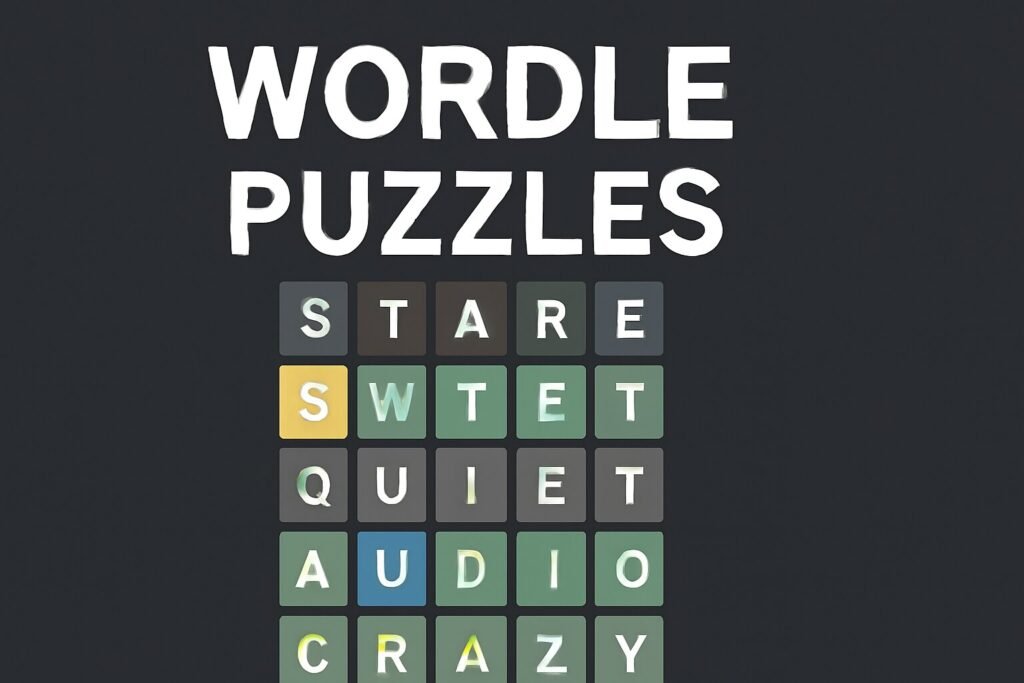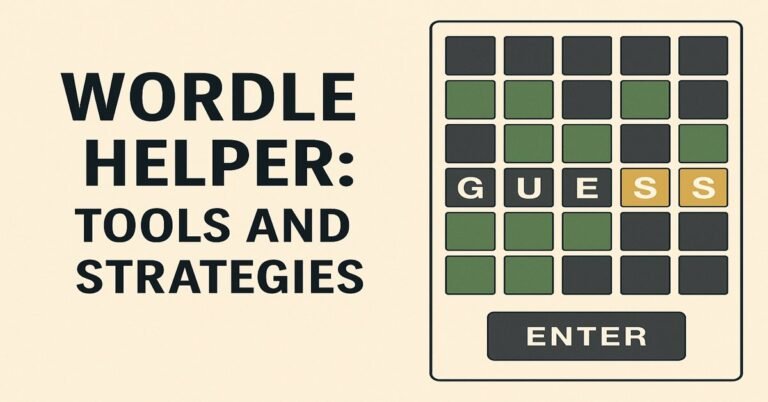
Top 10 Best Wordle Puzzles and How to Solve Them
Introduction:
Are you ready to take your Wordle skills to the next level?
Wordle, a game that has taken the world by storm, challenges players to guess a five-letter word in just six attempts. While the premise seems simple, the puzzles can range from easy to mind-bendingly tricky. If you’ve ever found yourself stuck on a Wordle puzzle, you’re not alone.
Over time, I’ve played countless puzzles, including some of the most challenging ones like Wordle Unlimited Vercel and others, such as Huddle Football Wordle and Speed Stars Wordle. Through trial, error, and plenty of strategies, I’ve learned how to approach even the toughest puzzles with confidence.
In this blog post, we will explore the top 10 best Wordle puzzles, break down the techniques to solve them, and give you some first-hand tips that can enhance your skills. So, whether you’re a beginner or an advanced player, you’re bound to find something useful here to sharpen your guessing skills.
1. The Classic Wordle Puzzle: A Foundation for Learning
Overview:
The classic Wordle puzzle is the foundation of the game and usually the first puzzle that players face. While seemingly straightforward, it requires strategic thinking to solve.
Difficulty Level:
The classic puzzle is often considered challenging because of the balance it strikes between familiarity and complexity. You need to identify vowels, consonants, and their respective positions within a limited number of guesses.
Tips for Solving:
I remember my experience with “STARE”—at first, it seemed like a fairly simple word, but as I started guessing words like “CRATE” and “BLAST,” I realised that the placement of vowels was key to solving it.
Tip:
- Start with high-frequency vowels like A, E, and O. A good opening guess, such as “SLATE” or “CRANE”, can help you quickly eliminate possibilities.
- Use the process of elimination. If a letter is confirmed to be in the word but not in the correct spot, swap it with other unused letters.
2. The Sneaky Double Letter Puzzle
Overview:
Double letter puzzles appear when a word contains repeated letters, which can often throw players off. These puzzles may seem straightforward, but they require an eye for detail.
Difficulty Level:
These puzzles demand a deeper understanding of letter patterns and can be difficult when trying to find common repeated letters.
Tips for Solving:
My experience with a “SWEET” puzzle stands out. Initially, I didn’t realise that repeating letters, like “S”, could be a factor until I guessed “SWORD” and saw the system flag “S” as a valid letter but in the wrong spot.
Tip:
- Pay attention to repeating vowels or consonants. Once you know a letter appears twice, try variations that place the letter in different spots, such as switching “S” between “STEEP” and “SWORD”.
3. The Uncommon Letter Word Puzzle
Overview:
Some Wordle puzzles feature rare letters such as Q, Z, or X. These puzzles can be tricky, especially if you’re not used to encountering these letters in common words.
Difficulty Level:
The inclusion of rare letters makes these puzzles more challenging to solve, requiring you to rely on word structure to identify potential matches.
Tips for Solving:
I remember struggling with “QUIET”. My first guess was “THING”, and none of the letters matched. However, once I recognised the letters Q and U together, the word became much easier to solve.
Tip:
- Focus on common word patterns for rare letters. If you’re stuck with letters like Q, Z, or X, think about words starting with “QUI” for Q or “AX” for X.
- Use the process of elimination. Once you know a rare letter is in the puzzle, try other words in the same family, such as QUILT, QUIET, or QUIZ.
4. The Multi-Vowel Puzzle
Overview:
Puzzles that contain multiple vowels can sometimes throw players off, especially when you’re trying to place the vowels correctly.
Difficulty Level:
These puzzles require more work as you need to recognise vowel combinations and think about common words with two or more vowels in them.
Tips for Solving:
- Start with guesses that include multiple vowels. For example, words like “AUDIO” or “IDEAL” can help you identify which vowels belong in the word.

5. The Hidden Consonant Puzzle
Overview:
These puzzles feature uncommon consonant placements or “hidden” consonants, such as the “PH” in “PSYCH”.
Difficulty Level:
Identifying uncommon consonants and understanding how they interact with vowels can be tricky.
Tips for Solving:
- Think about common consonant pairings or clusters. “PH”, “TH”, and “CK” are common combinations in words that you can test early.
6. The Easy Mode Puzzle
Overview:
Some Wordle puzzles are easy and have common words that almost anyone can solve.
Difficulty Level:
These are not challenging but still fun to solve, giving you a breather from more difficult puzzles.
Tips for Solving:
- Stick to simple, common words when faced with an easy puzzle. You may want to guess “APPLE” or “STONE” early on to quickly figure out the answer.
7. The Reverse Word Puzzle
Overview:
In this type of puzzle, the word may follow an unusual structure, such as words that are more common when placed in reverse.
Difficulty Level:
It isn’t easy if you’re not used to thinking in reverse, but with practice, it becomes easier to recognise words with different orders of letters.
Tips for Solving:
- Try working backwards from common endings, like “-ER” or “-ED”. For instance, a word like “APPLE” might be tricky unless you think of the reverse structure.
8. The Thematic Puzzle (Holiday/Seasonal Words)
Overview:
Some Wordle puzzles are tied to specific themes, like holidays or seasons. These puzzles are more context-driven.
Difficulty Level:
If you’re not familiar with the theme, these puzzles can be more challenging.
Tips for Solving:
- Think about the time of year. For example, during Christmas, words like “JOY” or “SNOW” may appear.
9. The Complex Letter Arrangement Puzzle
Overview:
These puzzles have unusual letter arrangements that require trial and error to solve.
Difficulty Level:
The complexity comes from the need to recognise non-standard letter combinations.
Tips for Solving:
- Don’t be afraid to guess unusual letter combinations, even if they seem unconventional.
10. The Unusual Ending Puzzle
Overview:
These puzzles end with uncommon letter endings, like “-FY” or “-OUS”.
Difficulty Level:
These can be tricky, as you might get stuck once you’re left with only a few guesses.
Tips for Solving:
- Focus on likely suffixes or endings. Words that end in “-OUS” are common, and figuring out the last letters can often lead to a quick solution.
Conclusion
Wordle is a fantastic way to challenge your brain, and with these strategies, you can improve your chances of solving even the most difficult puzzles. Experiment with different tactics, whether you’re tackling puzzles like Wordle Unlimited Vercel or any of the other challenging variations, and you’ll get better over time.
If you’re still stuck or need more tips, don’t hesitate to drop your favourite puzzles in the comments, and let’s share our solutions!




